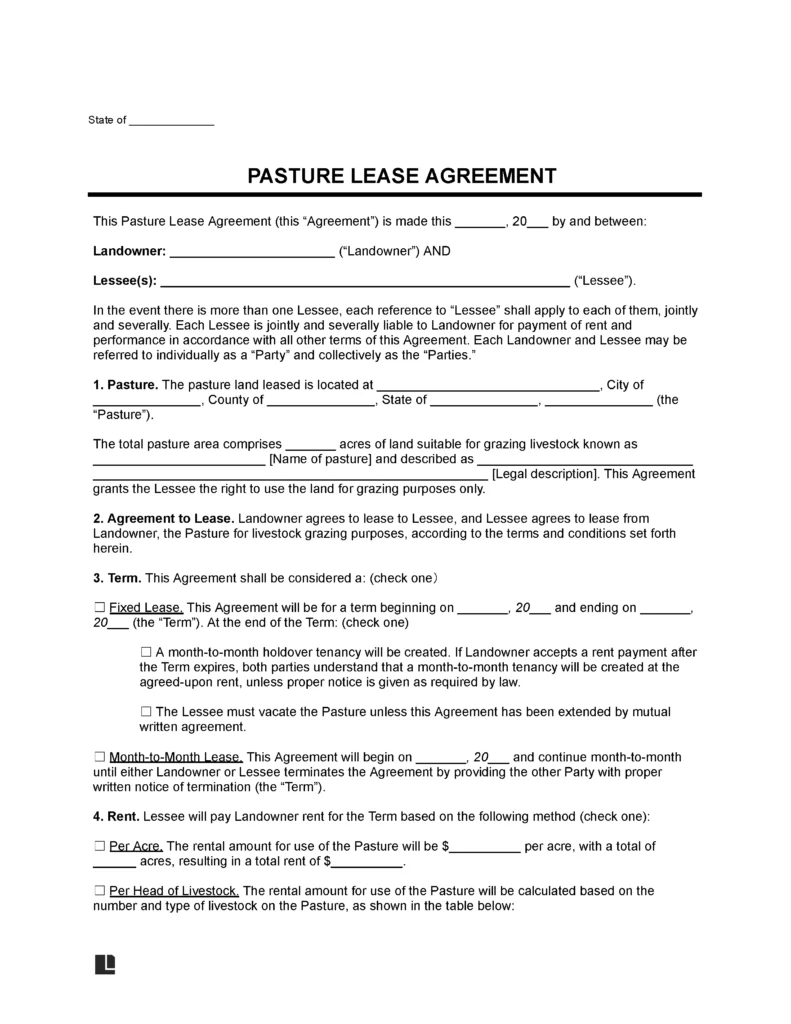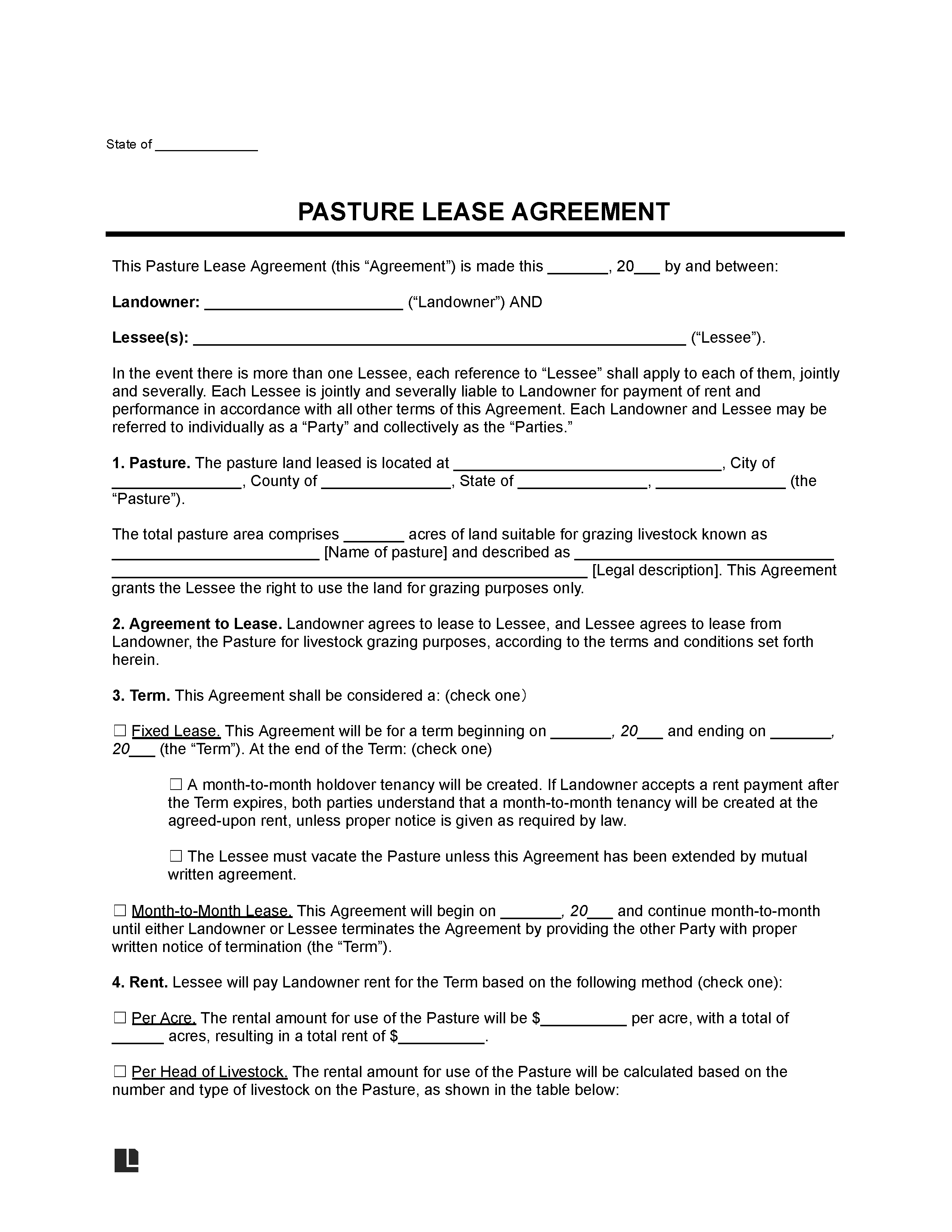A pasture lease agreement is a contract that allows a landowner to lease their land to a tenant for livestock grazing, particularly for cattle. This written agreement outlines the rights and responsibilities of both parties, ensuring clarity on how the land will be used and maintained during the lease period.
These pasture rental arrangements are particularly common in agricultural settings where livestock owners need access to grazing land without the long-term commitment of purchasing land.
Why Use
In American agriculture, pasture leases are crucial. They let ranchers use pasture land for grazing without needing to buy the property outright.
When evaluating a lease, ranchers often look at its long-term sustainability. A good lease should be clear, fair, and flexible. These qualities make the lease more reliable and beneficial for both the landowners and the ranchers.
Key Elements of a Pasture Lease Agreement
- Parties Involved: Clearly define the lessor (landowner) and lessee (tenant).
- Description of the Property: Include a precise description of the leased land, specifying the boundaries and any specific areas that are excluded or restricted from grazing.
- Lease Term: Typically, pasture leases are seasonal, running for 5-6 months (e.g., from April or May through October), though this can be adjusted depending on factors like weather conditions or previous grazing practices.
- Stocking Rate: This is the number of livestock that can be supported by the land. The stocking rate should be included to maintain sustainable grazing levels and to avoid overgrazing, which can damage the land. A well-defined stocking rate contributes to a fair agreement.
- Rental Rate and Payment Terms: Rental rates can be structured based on Animal Unit Months (AUMs), which reflects the amount of forage a grazing animal consumes in a month, rather than a flat per-acre fee. This allows flexibility if the grazing period is extended or shortened due to conditions such as drought. One thing ranchers often consider first when evaluating lease agreements is the rental amount, which can be influenced by market transparency and local demand.
Pasture Rental Agreement Process
Step 1 – Create and Negotiate the Lease
- Consider Key Factors: Assess local supply and demand, land quality, and the specific needs of both the landowner and the livestock owner.
- Draft the Agreement: Outline lease duration, rental rate, and terms related to grazing (e.g., permitted use, restrictions).
- Negotiate: Engage in open communication, be willing to compromise, and seek professional advice if needed to draft a fair and comprehensive agreement.
Step 2 – Check For These Clauses
- Disaster Clauses: It’s important to include provisions on how grazing activities will be adjusted in the case of natural disasters like drought, wildfires, or other events that reduce pasture availability. These provisions should specify who makes decisions on reducing the stocking rate and how the rent will be adjusted accordingly.
- Responsibilities: Define the obligations of each party concerning the maintenance and repair of fences, provision of water for livestock, weed control, and the maintenance of infrastructure like windmills or pumps.
- Exclusivity and Right of Entry: The lease should clarify whether the landowner retains rights to enter the land, under what conditions, and whether the lease is exclusive (i.e., leased only for grazing or shared with other uses).
- Termination Clauses: Include clear circumstances that could lead to the termination of the lease, such as non-compliance with the terms, sale of the property, or catastrophic events. Address whether any party is entitled to refunds or compensation under such circumstances. Clear termination clauses contribute to the staying power of the lease by ensuring that both parties understand the conditions under which the lease can be ended.
- Liability and Insurance: Ensure the lease includes a limitation of liability clause, outlining that the lessee is responsible for their livestock and any related damages. The lease may also require both parties to carry insurance to cover potential losses.
Step 3 – Execute and Manage the Lease
- Sign and Date: Ensure the agreement is signed and dated by both parties.
- Regular Reviews: Periodically review and update the agreement to maintain its relevance and enforceability.
Additional Insights
- Flexibility in Management: Detail any specific grazing rotations or livestock limitations.
- Seek Legal Counsel: Consult with legal experts to ensure compliance with local laws and address any unique concerns.
Pasture (Grazing) Lease Agreement Sample


